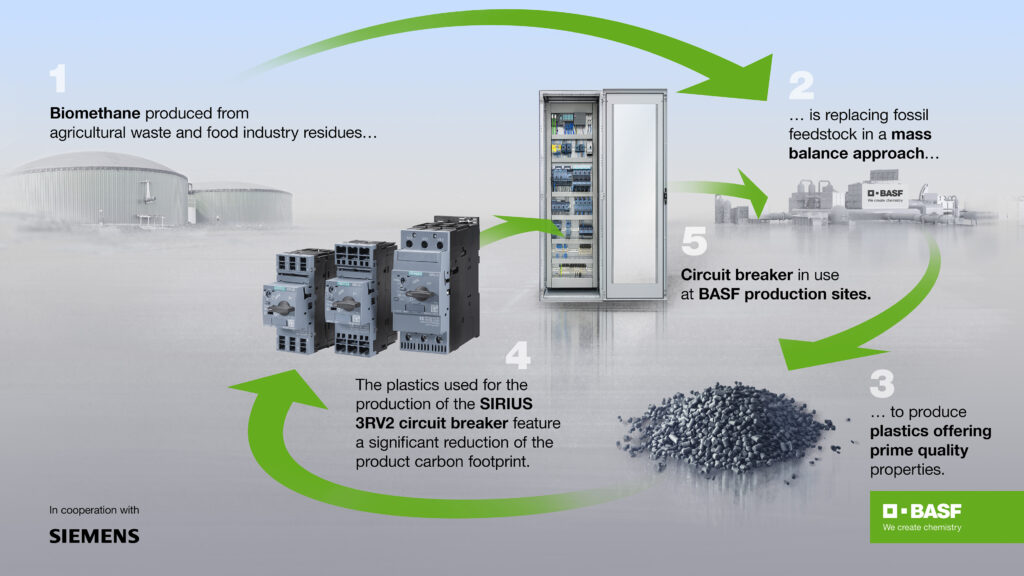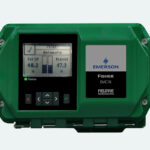ASIA ELECTRONICS INDUSTRYYOUR WINDOW TO SMART MANUFACTURING
Siemens, BASF Offer Better Tech for Circular Economy
Siemens Smart Infrastructure and BASF have announced the first electrical safety product to include components made from biomass-balanced plastics. Accordingly, they will suit applications across industrial and infrastructure applications.
Siemens employs BASF’s Ultramid® BMBcertTM and Ultradur® BMBcertTM in manufacturing Siemens’ SIRIUS 3RV2 circuit breaker. Specifically, it replaces the fossil feedstock at the beginning of value chain with biomethane derived from renewable sources such as agricultural waste.
Both materials offer the same quality and performance as conventional plastics. Nonetheless, the material changeover in the SIRIUS 3RV2 circuit breaker production will reduce the emission of carbon dioxide equivalents by ~270 tons per year1. Customers using these products contribute to a circular economy towards a more sustainable future.

Improve Asset Performance, Reliability
The move supports Siemens’ sustainability goals in the areas of decarbonization and resource efficiency, outlined within its DEGREE framework. Accordingly, the company is following a 1.5°C science-based decarbonization target, including a 90 percent reduction target for scope 1 and 2 until 2030. Moreover, the application of a Robust Eco Design for 100 percent of relevant product families by 2030.
In the coming months, Siemens plans to expand the use of sustainable materials across the broader SIRIUS industrial controls portfolio. In addition, the choice of materials plays a major role in further reducing carbon emissions and conserving natural resources. The SIRIUS 3RV2 circuit breaker meets the strict criteria of the recently introduced Siemens EcoTech label, designed to give customers a comprehensive insight into product performance across selected environmental criteria.
In addition, the product also offers lower power consumption over its lifetime compared to its predecessor.
“With our products, we help customers to improve asset performance, availability, and reliability, through resource-efficient and circular products which optimize energy use, production, and supply chains throughout their entire lifecycle. In BASF, we have found a strong partner that supports us with its innovations in the field of sustainable plastics,” said Andreas Matthé, CEO of Electrical Products at Siemens Smart Infrastructure.

Double Contribution to Sustainable Objectives
Recently, BASF is increasingly relying on renewable and recycled raw materials for the manufacture of its products. Thus, it is upping the ante to make its contribution to the circular economy and de-fossilization.
Martin Jung, President BASF Performance Materials, said, BASF also uses the SIRIUS 3RV2 circuit breaker on all its production plants. “In addition, this circuit breaker not only protects the motors but also increases their efficiency and reliability, making a double contribution to our sustainability objectives.”
With the mass balance approach, it has become possible to integrate various alternative raw materials into the value chain. Among the materials, the bio-naphtha and biomethane used by BASF have already earned certifications, such as ISCC PLUS and REDcert, for its sustainability.
The SIRIUS 3RV2 circuit breaker is a proof for resource-efficient plastics production and a milestone on BASF’s #ourplasticsjourney.
Factories and buildings around the world use circuit breakers to protect machines or electrical cables in the event of faults such as short circuits. They help prevent major damage, for example from fires.
Note
1) The calculation of Product Carbon Footprint of materials is according to TfS Methodology and compares the CO2 reduction of the BASF Biomass Balanced product vs the conventional BASF product.
11 June 2024




